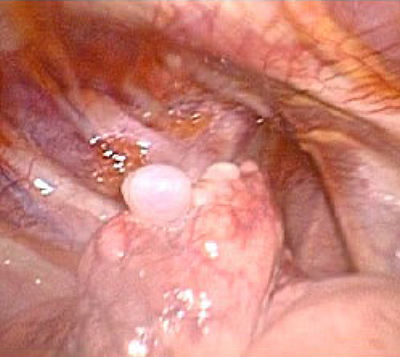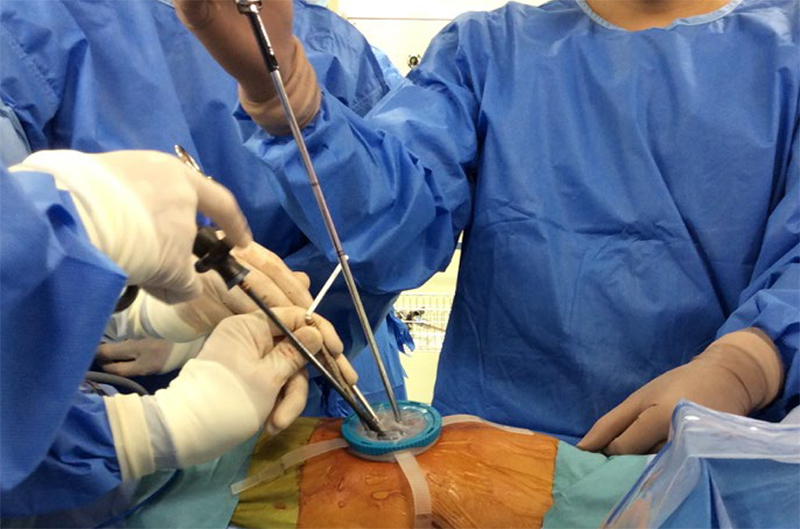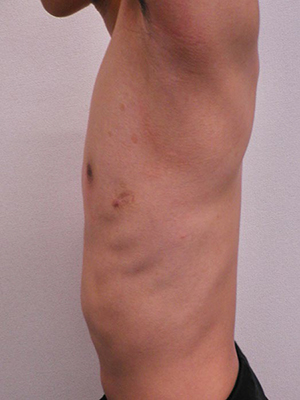Clinical Department
- TOP
- Department Information
- Clinical Department
- Thoracic Surgery
- Pneumothorax and Cystic Diseases Center
Pneumothorax and Cystic Diseases Center
Introduction
The Department of Thoracic Surgery has been providing specialized care for pneumothorax, including single port thoracoscopic surgery with only a single wound of less than 2 cm in diameter. Currently, many pneumothorax surgeries are being performed at nearby hospitals by physicians who are not board certified. As a result, early recurrence or intra-and postoperative complications often occur, and patients are eventually referred to our hospital. With this background in mind, we have established the " Pneumothorax and Cystic Diseases Center " at ICCRC to provide advanced diagnosis and specialized treatment for all pneumothorax and cystic lung diseases.
*Pneumothorax
A pneumothorax is a disease in which a hole develops in the lungs during normal daily life, causing air to leak out and the lungs to collapse like a flat tire. The squeezing of the lungs causes chest pain, shortness of breath, coughing, and other symptoms. In most cases, it is caused by a weak sac called a "cyst (bra)" that forms in part of the lung and suddenly ruptures.
There are two types of pneumothorax: primary spontaneous pneumothorax, which tends to occur incidentally in young men, and secondary pneumothorax, which occurs as a symptom of interstitial pneumonia or emphysema. Patients often have various underlying diseases such as diabetes mellitus, autoimmune diseases and so on, and they require specialized treatment.
The Center also treats menstrual-associated pneumothorax, a special type of pneumothorax that occurs in women. This disease is characterized by recurrent pneumothorax coinciding with menstrual periods. The treatment differs from the usual pneumothorax and requires specialized treatment. Women who experience chest pain, shortness of breath, or coughing during or around menstruation are advised to see a doctor.

Bra on the surface of the lung
*About treatment
If the disease is mild, follow-up observation is possible. If the disease is moderate or severe, a thin tube called a drain can be inserted into the chest, or surgical treatment can be performed. A specialist physician at the center will decide on a treatment plan after careful consultation with the patient.
*Surgery for pneumothorax
Many patients with pneumothorax are young, and it is important cosmetically to minimize the scar and make it as small as possible. While conventional surgery is performed with three scars under the armpit, the Center also performs single port thoracoscopic surgery with only one scar under the armpit measuring less than 2 cm in diameter. The surgical scar is small and less noticeable. In addition, the burden on the patient is considerably reduced by alleviating postoperative pain.

The surgery is performed with only one wound of less than 2 cm in diameter.

The postoperative scar is small and less noticeable.
Attention to patients,
If you are diagnosed with pneumothorax, you can see a doctor as soon as possible. When your family doctor contacts us, we will provide smooth 24-hour service in cooperation with Kobe University Hospital, even after office hours.
To general practitioners and medical service providers,
Please contact us as soon as you see a patient with pneumothorax. We will respond promptly 24 hours a day, regardless of the time you call.
Contact information
Kobe University Hospital, Department of Thoracic Surgery
Representative: 078-382-5111 (Direct line to the department: 078-382-5750)
Night time: 078-382-6510 (The night time emergency receptionist will connect you to the doctor in charge.)
Please see our website for outpatient consultation days and details.
http://www.med.kobe-u.ac.jp/gts/
(Department of Thoracic Surgery, Kobe University)
https://www.hosp.kobe-u.ac.jp/iccrc/dep/kokyuki/
(Department of Thoracic Surgery, ICCRC)